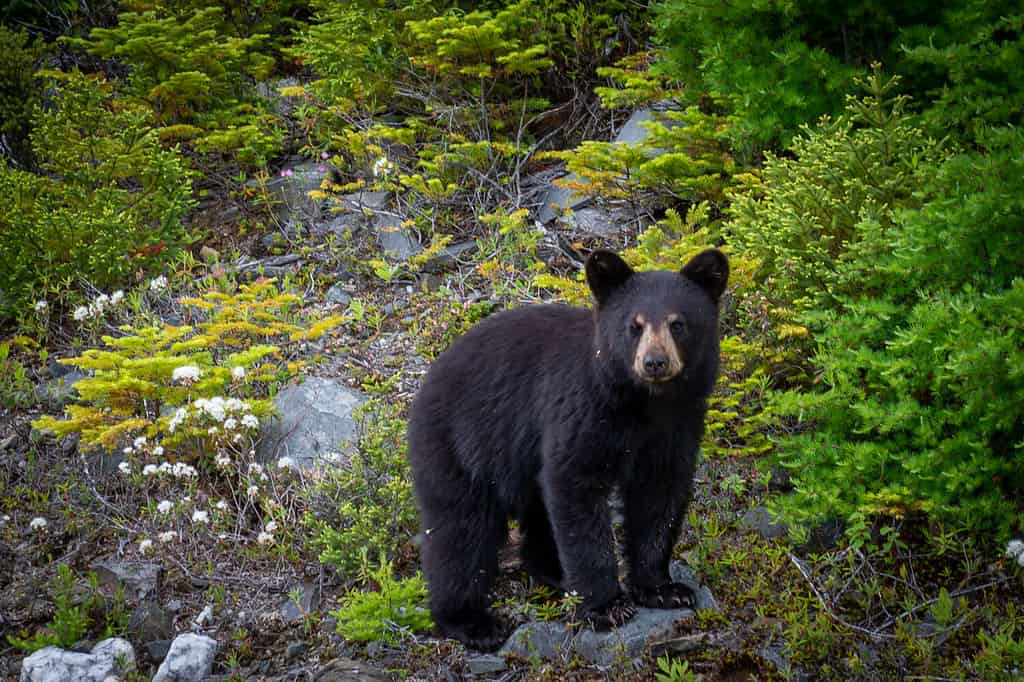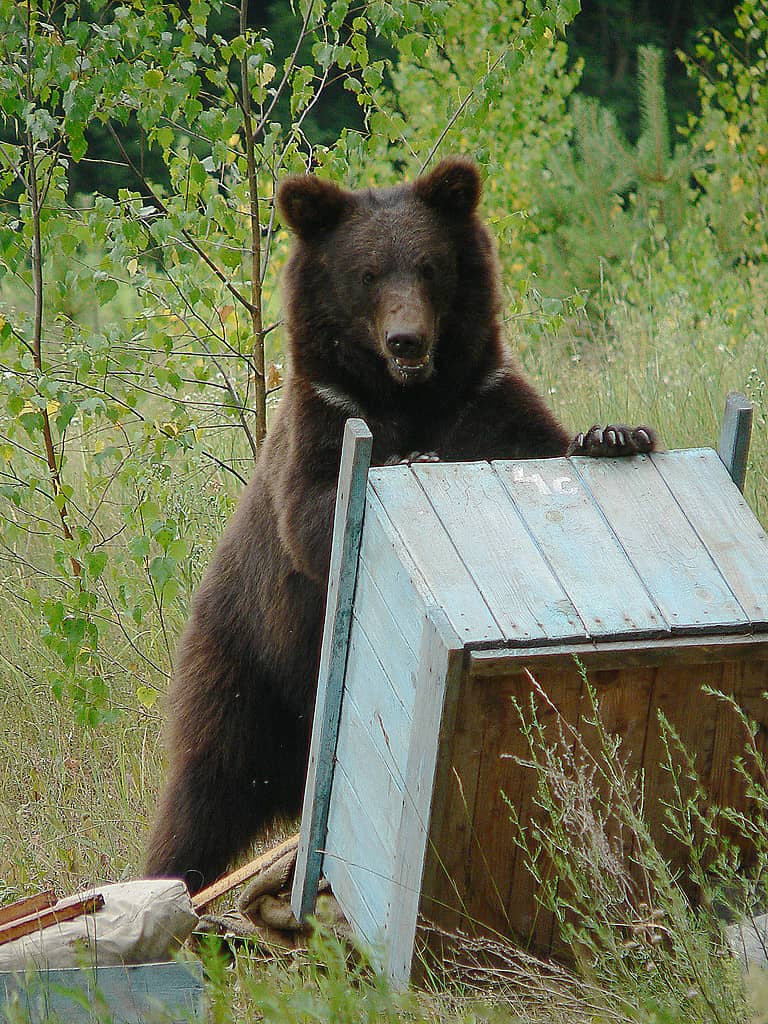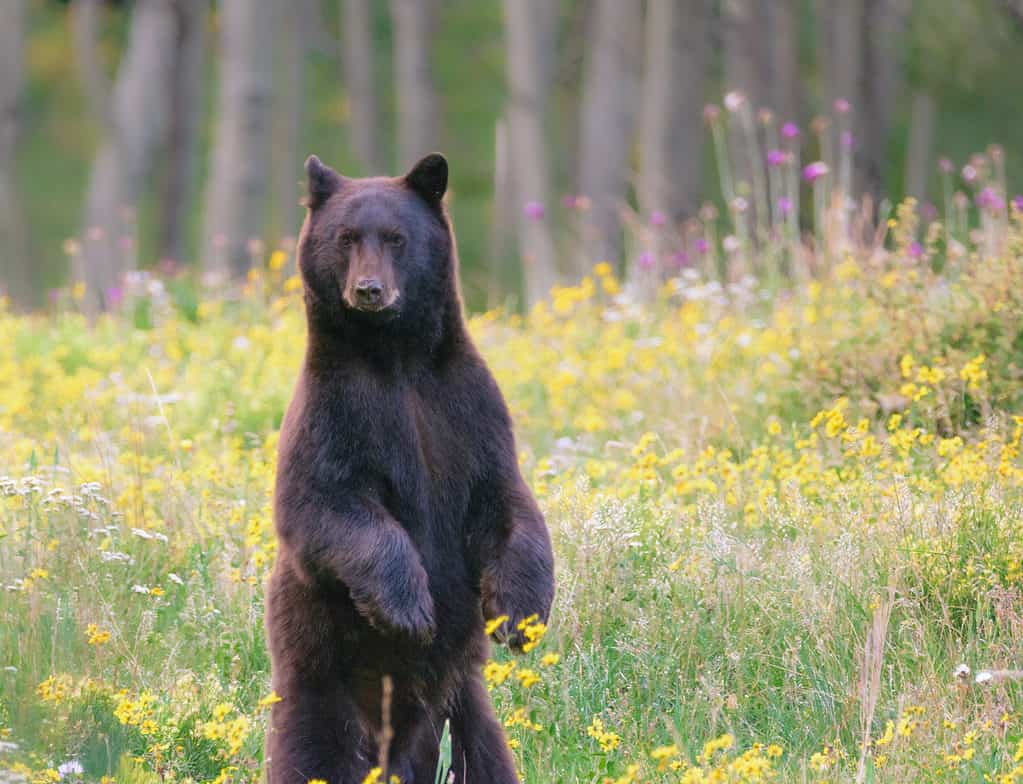A cliché as old as time involves a bear’s love for honey. Classic characters such as Winnie the Pooh show us just how much these creatures adore the sweet nectar that bees create. But do real bears enjoy the tasty treat as much as Christopher Robin’s pawed friend?
Believe it or not, these apex predators do indeed love honey! While we can’t blame them, this sugary, sticky, snack has gotten real bears in trouble, just like it has our friend Winnie! Today we’re going to be taking a look at a bear that was swarmed by yellowjacket wasps after digging up their beehive.
In the video below, we see what appears to be a younger black bear pawing at the ground like a dog burying a bone. Instead, this cub is looking for something to snack on. As it continues to dig, we see more and more wasps surrounding it.
Check Out the Footage Below!
In the video, the young bear moves on to another nest, digging it up as well. In the process, the black bear continuously gets stung. Yellow jackets can sting persistently and induce life-threatening allergic reactions, making them harmful to humans.
One might question why striped skunks, raccoons, and black bears commonly dredge up their underground nests given that yellowjacket wasps don’t make or store honey. Instead of honey, these insect-eating predators esteem the juvenile yellowjackets (larvae) so highly.
Each year, stinging insects transport over 500,000 patients to the hospital’s emergency room, and yellow jacket allergies can be fatal. Bears have a heavy coat of fur but are nevertheless vulnerable to stings around the lips, tongue, and face.
In a somewhat adorable fashion, the bear in this video rolls around like a dog in the grass after getting stung. It’s doing this to get the wasps away and to itch at the stings to relieve some discomfort. To these animals, it seems worth the stings of the mature wasps to get a taste of the larvae.

Yellowjackets don’t create or store honey.
©Jim Lambert/Shutterstock.com
The Bears and the Bees

Bears usually eat grass, plants, bugs, larvae, stems, fruit, fish, and other hooved animals.
©Dolores M. Harvey/Shutterstock.com
Black bears in the United States are omnivorous, which means they will consume both vegetation and meat. Their diet consists of grass, other succulent plants, bugs, larvae, stems, fruits, meat, salmon, and meat. They can kill adult deer and other hoofed animals, but they typically can only kill extremely young deer, moose, elk, and more.
Bears that consume certain meals associated with humans may quickly develop a tolerance for them, which frequently leads to the killing of the bears as a nuisance. This also applies to bee colonies because bears are drawn to honey.
Is It Normal for Bears to Raid Bee Hives?

Bears not only love honey but they are attracted to beehives.
©Film Studio Aves/ iStock / Getty Images Plus via Getty Images
Bears, including all black and brown bears, really love bees and wasp hives. They are so attracted to the scent of a hive and once discovered, they will descend upon it, whether it is a wild hive or in an apiary, or bee farm. It is not only the smell of honey that entices them, rather they are interested in the entire structure of the hive and its contents. They consume the bees as well as their larvae, which is a good source of protein for the bear.
Depending on where the nest is located, bears will either dig up a nest or climb a tree to reach it. They will even often swallow the nest whole. While they do receive hundreds of stings in the process, their skin is relatively thick and while they don’t feel the pain in the same way that a human does, they are still susceptible around their facial area.
How Large Do Black Bears Get?

The largest documented black bear was found in North Carolina in 1998, weighing an impressive 880 pounds.
©Constance Mahoney/Shutterstock.com
Black bears are sexually dimorphic, which means adult males are significantly larger than adult females. Large male black bears can weigh more than 600 pounds, whereas females usually weigh less than 200 pounds.
On average, males weigh between 125 to 500 pounds, whereas females usually weigh around 90 to 300 pounds. Male black bears commonly display a size advantage ranging from 20% to 60% larger than their female counterparts. In fact, the heaviest recorded black bear was discovered in North Carolina in 1998, weighing an impressive 880 pounds.
Grizzly bears are usually larger than black bears, but when one is unexpectedly nearby, it’s hard to distinguish them solely by size. When standing, a black bear typically reaches about 5 feet in height, while a male grizzly can stand around 6.5 feet tall. The contrast in size becomes evident only when they are side by side.
The photo featured at the top of this post is © SamiPu/Shutterstock.com
Thank you for reading! Have some feedback for us? Contact the AZ Animals editorial team.






